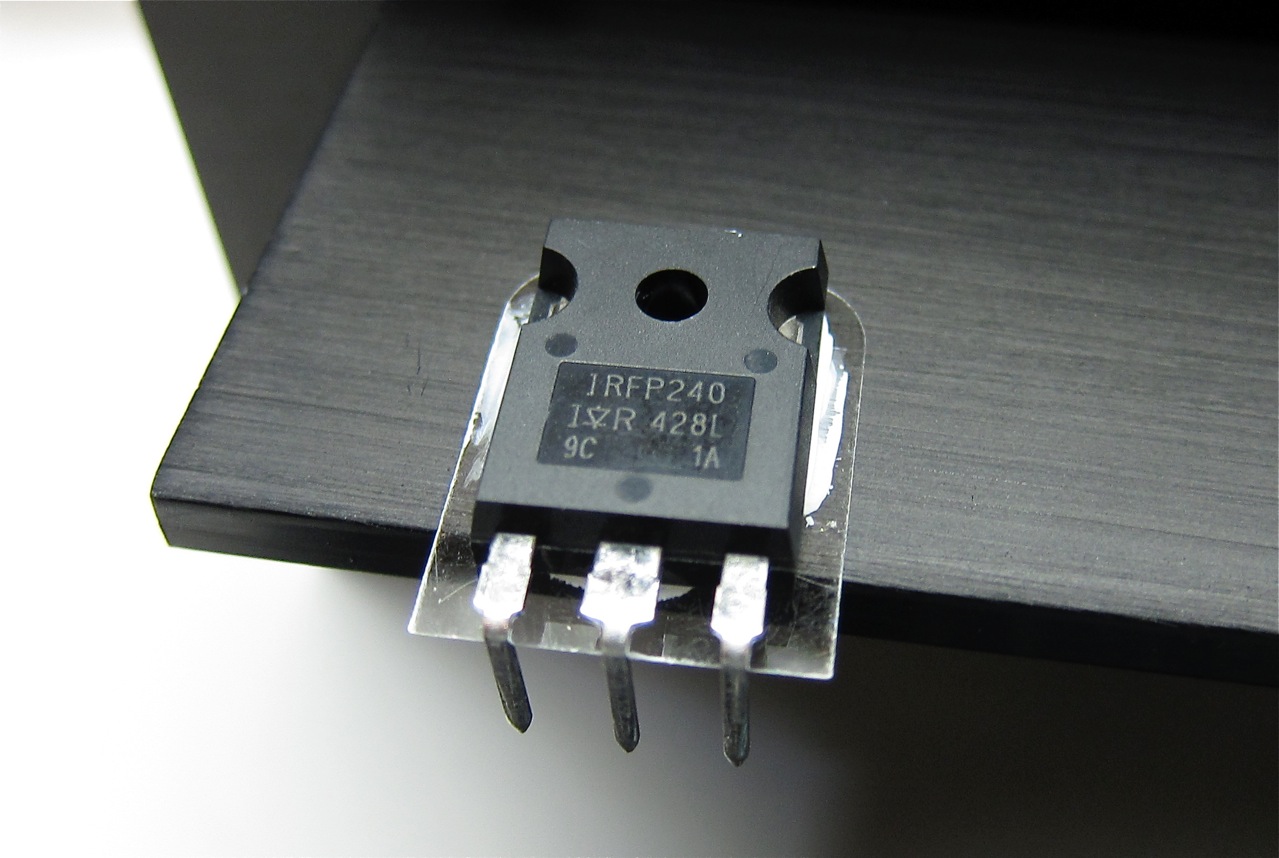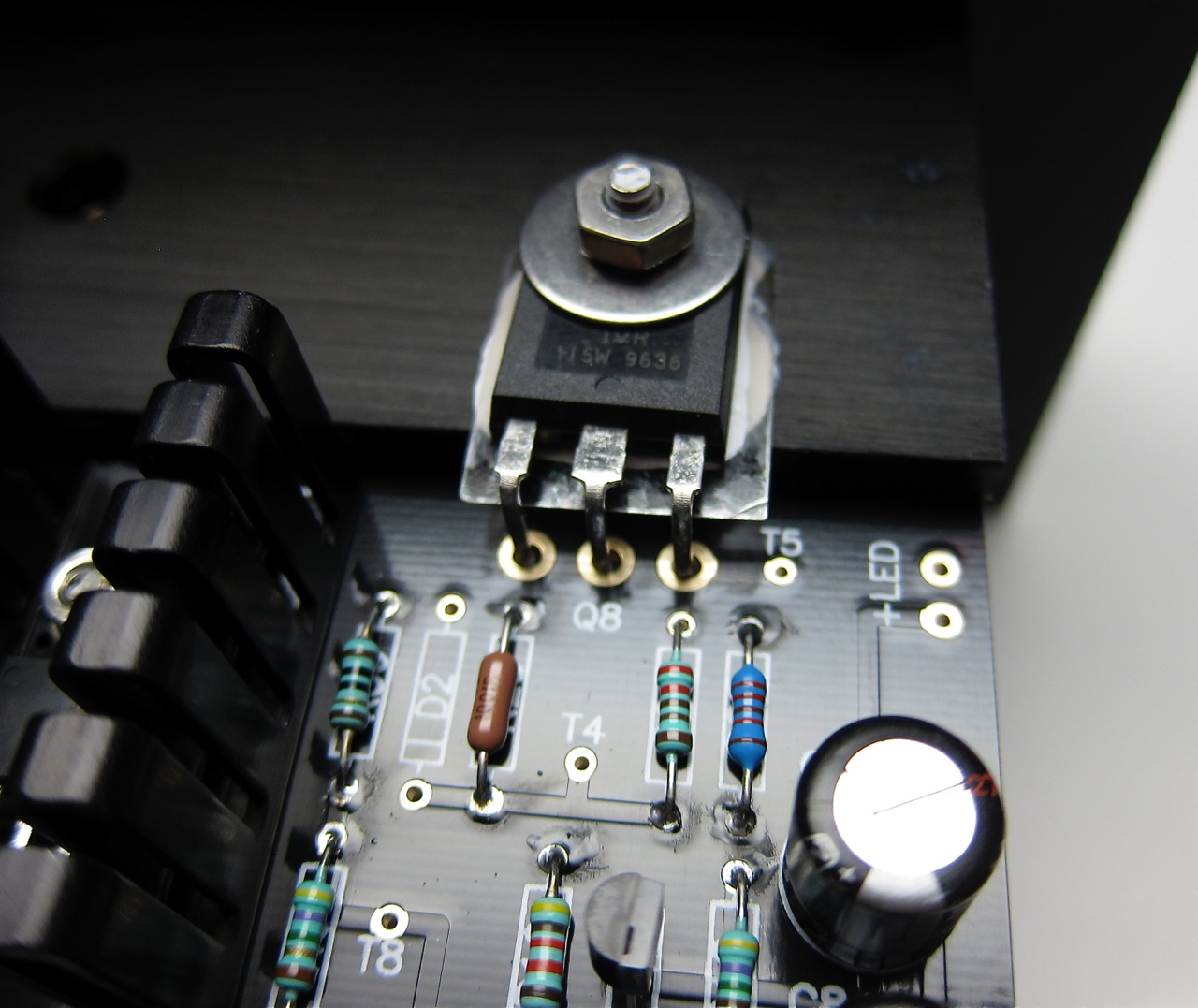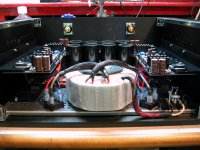The universal PS boards are out of stock 🙁 and no ETA.
Tea-Bag has a PCB design you might consider: http://www.diyaudio.com/forums/blogs/tea-bag/923-dual-rail-power-supply-power-amplifier.html
I have a sheet of Silpad 1500ST. Presumably its a better choice for mounting the mosfets and VFETs than using the mica / goop ?
I have a sheet of Silpad 1500ST. Presumably its a better choice for mounting the mosfets and VFETs than using the mica / goop ?
Not necessarily. Please see Papa's comment here (especially about silpad failing on TO-3 devices):
http://www.diyaudio.com/forums/pass-labs/37262-mica-goop.html#post430976
Cheers,
Dennis
The kit does not include any plastic sleeves to insulate the power mosfets when using the machine screws to secure them to the T brackets. Is that because those mosfets are already insulated in that respect?
The Mosfet have an insulated hole for mounting and the bolt connecting the Mosfet to the bracket/pcb does not need an insulating washer.
The Mosfet does need a Mica or other insulator in-between the bracket and the metal face of the device, as shown.


The Mosfet does need a Mica or other insulator in-between the bracket and the metal face of the device, as shown.


Yes, the central mounting hole of TO-247 packages is electrically isolated. You will still need Mica and Goop to isolate the exposed rear (the so called thermal pad, electrically connected to Drain).
Yes, the central mounting hole of TO-247 packages is electrically isolated. You will still need Mica and Goop to isolate the exposed rear (the so called thermal pad, electrically connected to Drain).
Yes thanks guys - it was the mounting hole I was asking about. I was aware the rear contact area with the T bracket needs to be electrically insulated but thermally linked.
In contrast the kit does include plastic sleeves for mounting the smaller mosfets as their mounting holes are not insulated as far as I can see.
I have a few questions about the supply.
What transformer output voltage (under load) have people gone for to arrive @ 28Volt DC for the supply voltage with the standard AD PSU (CRC)?
What is the voltage drop when connecting up the VFET (fully populated PCB's)?
Although I'm also playing with the idea of an LCRC supply. Would I be better of with a 22VAC or 25VAC transformer? Has anybody tried a R-Core instead of a toroidal?
Thanks,
What transformer output voltage (under load) have people gone for to arrive @ 28Volt DC for the supply voltage with the standard AD PSU (CRC)?
What is the voltage drop when connecting up the VFET (fully populated PCB's)?
Although I'm also playing with the idea of an LCRC supply. Would I be better of with a 22VAC or 25VAC transformer? Has anybody tried a R-Core instead of a toroidal?
Thanks,
thumb rule - divide 28Vdc with 1.25
Rcore vs. toroidal - who cares ........
in the book - same quality toroidal should be better than RCore
thing with Rcore is that winding machine , thus process itself, is substantially simpler than for toroid
Rcore vs. toroidal - who cares ........
in the book - same quality toroidal should be better than RCore
thing with Rcore is that winding machine , thus process itself, is substantially simpler than for toroid
Thanks,
Which book are you referring too?
Is the consensus here that 22VAC is the right value to go for?
Which book are you referring too?
Is the consensus here that 22VAC is the right value to go for?
You can use other values, but will need to adjust the resistor values. See the writeup in firstwatt. If you are risk adverse, stick to 22 VAC - the sony vfets are hard to find.

Sent from my iPad using Tapatalk

Sent from my iPad using Tapatalk
I'm using the De Luxe enclosure. In addition to the holes for the T brackets, the heatsinks have lots of other pre drilled holes. The pattern of those holes is not symmetrical above and below the T brackets. However, as far as I can see, I'm not going to be using any of the holes (apart from the ones that are used to screw the chassis together) and so it's doesn't matter which way up the heatsinks are mounted.
Or am I missing something?
Or am I missing something?
I'm using the De Luxe enclosure. In addition to the holes for the T brackets, the heatsinks have lots of other pre drilled holes. The pattern of those holes is not symmetrical above and below the T brackets. However, as far as I can see, I'm not going to be using any of the holes (apart from the ones that are used to screw the chassis together) and so it's doesn't matter which way up the heatsinks are mounted.
Or am I missing something?
IMHO, only really matters for clearance to parts below, like PS caps, etc., if that applies to your situation. All things equal might be slightly better to orient the heatsink so the T bracket is mounted lower for slightly better dissipation. I think we're talking 5mm or so here. Below you can see the comparison R/L.
BK
Attachments
- Home
- Amplifiers
- Pass Labs
- Sony vFET Illustrated build guide
